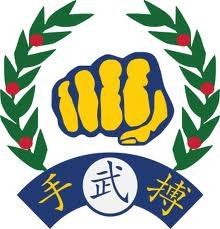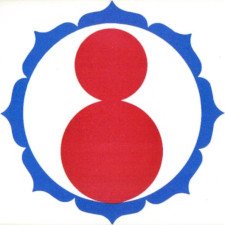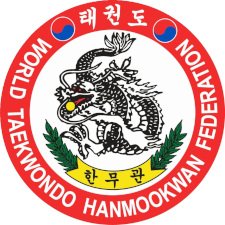The 9 Kwans
of Taekwondo
한국 태권도 9대 관
When discussing to martial arts, the word Korean word 관 / 館 Kwan (“gwahn”) refers to a school or clan of martial artists who follow the same master. Prior to uniting under the name of Taekwondo, each school practiced a mix of different styles based mostly on Japanese Shotokan Karate-do mixed with Chinese Shaolin Quanfa (Gongfu / Kung Fu) and as well as various traditional Korean empty hand fighting systems (most of which were suppressed during the occupation of Korea by Imperial Japan from 1910 - 1945).
The word 관 / 館 “Kwan” is used in reference to Korean martial arts styles, but stays as 칸 “Kan” for Japanese styles such as 쇼토칸 / 松濤館 Shotokan or 고도칸 / 講道館 Kodokan. Indeed, the original Korean masters called their schools “Kwan” due to their initial training in Japanese styles. Many of the people from the early days were actually 1st or 2nd Dan in Shotokan and/or Judo.
What would eventually become Kukkiwon Taekwondo started off as 5 original Kwans formed during or shortly after World War II (1939 - 1945) with 4 more important ones being formed after the Korean War (1950 - 1953).
As of 1972 all 9 Kwans officially endorse Kukkiwon Taekwondo as their curriculum and style of martial art.
On August 7th, 1978 the Unification Proclamation was signed, bringing all 9 Kwans under the leadership of Kukkiwon.
The 5 Original Kwans
Chung Do Kwan
Blue Wave School
청도관 / 靑濤館
“Chuhng Doh Kwahn”
Established: 1944 or 1946
Founder(s): 이원국 / 李元國 Lee Won-Kuk (1907–2003)
Original Style: Shotokan Karate
Alternate Spelling: Cheong Do Gwan
Chung Do Kwan was the first of the original Kwans to be formed with its name symbolizing the spirit and vitality of a young person. The founder, Lee Won-kuk, learned Shotokan Karate from Funakoshi Gichin (the Father Of Modern Karate) in Japan while attending law school, allegedly attaining 3rd Dan. After moving back to Korea in 1944, Lee taught Tang Soo Do at a school hall in Seoul.
After Korea regained its independence from Japan at the end of World War II, Chung Do Kwan became known for helping the city of Seoul get rid of the gangsters plaguing its streets and organizations, earning it the moniker of National Police Headquarters Dojang.
On June 15th, 1959 after much political infighting Son Duk-Sung Kwanjangnim expelled Nam Tae-Hi Sabeomnim and cancelled Choi Hong-Hi’s honourary 4th Dan & honourary Kwanjangnim position.
The Kukkiwon Poomsae “Hansu” was made to represent Chung Do Kwan.
Original graduates include:
Yoo Woong-Jun (Head Instructor)
Son Duk-Sung (Head Instructor, 2nd Kwanjangnim)
Uhm Woon-Kyu (3rd Kwanjangnim)
Choi Hong-Hi (Honourary Kwanjangnim)
Nam Tae-Hi (Oh Do Kwan founder)
Han Cha-Kyo (Oh Do Kwan founder)
Rhee Jhoon-Goo (The Father Of American TKD)
Song Moo Kwan
Pine Tree School
송무관 / 松武館
“Sohng Moo Kwahn”
Established: 1944 or 1946
Founder(s): 노병직 Ro Byung-Jik (1919–2015)
Original Style: Shotokan Karate
Alternate Spelling: Song Mu Gwan
The founder Ro Byung-jik learned Shotokan Karate from Funakoshi Gichin in Japan, allegedly attaining 1st Dan, alongside the founder of the Chung Do Kwan, Lee Won-kuk, before moving back to Korea in 1944 and teaching martial arts. Due to circumstances in Korean surrounding the end of World War II, the dojang closed down after a few months but reopened in 1946.
The word “Song” in the school’s name means “pine tree”, borrowed from the “sho” in “Shotokan” where it means the same thing, and symbolizes long life. In fact, the school’s original name may have actually been Song Do Kwan (Shotokan).
Original graduates include:
Lee Young-Sup (2nd Kwanjangnim)
Kang Won-Sik (3rd Kwanjangnim)
Moo Duk Kwan
School Of Martial Virtue
무덕관 / 武德館
“Moo Duhk Kwahn”
Established: 1946
Founder(s): 황기 / 黄琦 Hwang Kee (1914–2002)
Original Styles: Taiji Quan, Tangsudo, Hwasudo, Subakdo
Alternate Spelling: Mu Deok Gwan
Moo Duk Kwan began as a Tang Soo Do school near the railroad station in Yongsang, Seoul, earning it the nickname “Railroad Dojang”. Hwang Kee claims to have learned Kuk Sool in Manchuria in 1935 but this is disputed by other Taekwondo seniors. It is likely that he learned Yang style Taiji Quan from the Chinese master Yang Kuk Jin but may have also trained at Chung Do Kwan briefly. He never officially held any rank in a Japanese or Chinese martial art prior to establishing Moo Duk Kwan.
Moo Duk Kwan spread via the railway system, opening small clubs at the various stations along the line before opening a central dojang in 1955 in Seoul. Hwang Kee refused to unify with the KTA, though in 1965 it happened anyways when Kim Young-taek and Hong Chong-soo joined the Moo Duk Kwan to the KTA without him.
Original graduates include:
Kim Woon-Chang (first promoted to a Dan)
Lee Kang-Ik (2nd Kwanjangnim)
Hong Chong-Soo (3rd Kwanjangnim)
Oh Se-Joon (4th Kwanjangnim)
Chang Moo Kwan
School For Martial Arts Development
창무관 /彰武館
“Chahng Moo Kwahn”
Established: 1946
Founder(s): 윤병인 Yun Byeong-In (1920–1983)
Note: Established as 권법무 YMCA Kwon Beop Bu Kwan, reformed as Chang Moo Kwan in 1953 by 이남석 Lee Nam-Suk (1925–2000)
Original Style: Quanfa
Alternate Spellings: Gweonbeop Bu Gwan, Chang Mu Gwan
Originally founded as the Kwon Beop Bu Kwan at the YMCA in Jong Ro, Seoul. Founder Yun Byeong-in learned Quanfa (Chinese gong-fu / kung fu) in Manchuria as a youth before moving to Japan and learning Shudokan-Ryu Karate from Toyama Kanken, allegedly attaining the level of 4th Dan.
권법 Gweonbeop is the Korean pronunciation of the Chinese word 拳法 Quanfa.
Yun Byeong-in disappeared in 1950 during the Korean War and his whereabouts are unknown between 1951 and 1966. He died of lung cancer in Chongjin, North Korea in 1983.
When Yun disappeared, one of his instructors Lee Nam-suk took over as head instructor, renaming the school as Chang Moo Kwan after the Korean War ended in 1953.
The Kukkiwon Poomsae “Cheonkwon” was made to represent Chang Moo Kwan, showing the flowing and two handed movements typical of Chinese martial arts.
Original graduates include:
Lee Nam-Suk (2nd Kwanjangnim)
Kim Soon-Bae (3rd Kwanjangnim)
Hong Jeong-Pyo (Kang Duk Won founder)
Park Chul-Hee (Kang Duk Won founder)
Ji Do Kwan
School Of Wisdom’s Way
지도관 / 智道館
“Jee Doh Kwahn”
Established: 1946
Founder(s): 전상섭 Jeon Sang-Sup
Note: Established as 연무관 / 研武館 Yeon Moo Kwan (School For Martial Study), reformed as Ji Do Kwan in 1960 by 윤쾌병 / 尹快炳 Yoon Kwae-Byung (1922–2000)
Original Style: Shotokan Karate & Kodokan Judo
Alternate Spelling: Ji Do Gwan
Originally founded in Seoul as Yeon Moo Kwan Kong Soo Do after World War II by Chun Sang-sup, a practitioner of Shotokan Karate and Judo, who began his martial arts training while studying abroad in Japan. Master Chun was abducted to North Korea during the Korean War and was never seen or heard from again.
After the Korean War ended, the dojang was reformed as Ji Do Kwan (sometimes written as '“Jidokwan”) by former students of Master Chun, Yoon Kwae-byung and Lee Chong-woo, who initially refused to unify under the KTA. Jidokwan established itself as a school with a strong kyorugi program and was successful in many of the early full contact tournaments in Korea. Yoon Kwae-byung allegedly attained the level of 4th Dan in Shudokan Karate-do under Toyama Kanken.
The Kukkiwon Poomsae “Ilyeo” was made to represent Jidokwan.
Original graduates include:
Lee Chong-Woo (3rd Kwanjangnim)
Yoon Kwe-Byung (Head Instructor)
Lee Kyo-Yoon (Han Moo Kwan founder)
4 Major Kwans
Formed After The Korean War
Han Moo Kwan
Korean Military School
한무관
“Hahn Moo Kwahn”
Established: 1954
Founder(s): 이교윤 Lee Kyo-Yoon (1930–2017)
Note: An off-shoot of Yeon Moo Kwan
Original Style: Shotokan Karate, Tang Soo Do
Alternate Spelling: Han Mu Gwan
Lee Kyo-yoon, originally a member of Yeon Moo Kwan, refused to join the dojang when it reformed as Jidokwan and instead chose to create his own school.
Oh Do Kwan
School Of My Way
오도관
“Oh Doh Kwahn”
Established: 1955
Founder(s): 최홍희 / 崔泓熙 Choi Hong-Hi (1918–2002), 남태희 / 南太熙 Nam Tae-Hi (1929–2013), Han Cha-Kyo (1934–1996)
Note: An off-shoot of Chung Do Kwan
Original Style: Shotokan Karate, Tang Soo Do, Taekwon-Do
Alternate Spelling: O Do Gwan
General Choi Hong-hi and Nam Tae-hi were responsible for training many of the army and police forces throughout South Korea in the early 1950s. The Oh Do Kwan was originally made up of many members of Chung Do Kwan, who eventually had their memberships with that school revoked due to their formation of a new kwan.
Kang Duk Won
House Of Generous Teaching
강덕원 / 講德院
“Kahng Duhk Wuhn”
Established: 1953
Founder(s): 박철희 Park Chul-Hee (1932-2016), 홍정표 Hong Jeong-Pyo (19xx-xxxx)
Note: An off-shoot of YMCA Kwon Beop Bu Kwan
Original Style: Quanfa, Tang Soo Do
Alternate Spelling: Kang Deok Won
Park Chul-hee and Hong Jeong-pyo, originally members of YMCA Kwon Beop Bu Kwan, refused to join the dojang when it was reformed as Chang Moo Kwan and instead decided to found their own school.
This is the only of the 9 original Kwans who chose to use the word 원 / 院 “Won” instead of 관 / 館 “Kwan”.
Jung Do Kwan
School Of The Righteous Way
정도관 / 正道館
“Juhng Doh Kwahn”
Established: 1954
Founder(s): 이영우 Lee Yong-Woo (19xx-2006)
Note: An off-shoot of Chung Do Kwan
Original Style: Shotokan Karate, Tang Soo Do
Alternate Spelling: Jeong Do Gwan
Jung Do Kwan is unique amongst the 4 annex kwans in that the founder did not leave his previous school on less than favourable terms. Lee Yong-woo wanted to start his own dojang and did so without any negativity from his former peers.
The Kwan Unification Committee
The Kwan Unification Committee (Choo Jin Eui Won Hwe) was created on February 23, 1977. The Committee members agreed in principle to give up the concept of Kwan in order to unify. In addition, the Chong Bon Kwan was created to eliminate all of the negative aspects of Taekwondo.
The following people were members of the Chong Bon Kwan:
Kim Un-Yong
Lee Chong-Woo
Lee Nam-Suk
Lee Byung-Ro
Kang Won-Sik
Uhm Woon-Kyu
Kwak Byung-Oh
The Kukkiwon Unification Proclamation
The Unification Proclamation was signed on August 7th, 1978 by:
Chun Jung-Woong representing Song Moo Kwan
Lee Kyo-Yoon representing Han Moo Kwan
Lee Nam-Suk representing Chang Moo Kwan
Choi Nam-Do representing Moo Duk Kwan
Kwak Byung-Oh representing Oh Do Kwan
Lee Kum-Hong representing Kang Duk Won
Lee Yong-Woo representing Jung Do Kwan
Lee Chong-Woo representing Ji Do Kwan
Uhm Woon-Kyu representing Chung Do Kwan
Kim In-Suk representing Kwan Ri Kwan
Lee Byung-Ro and Kang Won-Sik (both members of the Chong Bon Kwan) signed the Proclamation as well.
"Taekwondo will strive hard to unify and will eliminate the different Kwan of the last 30 years. Since 1972, we unified the Taekwondo terminology and poomse in order to minimize the differences which existed between the different Kwan. With respect to Dan Promotion Tests, the Sabum in the individual dojang will recommend the candidates for rank advancement. We will do our duty to treat everyone as equals and to work towards a clean administrative procedural system. Because Taekwondo is our National Sport, we promise to be good leaders and unify all Taekwondoin throughout the nation. We will close all Kwan offices and the Chong Bon Kwan will instead coordinate with the Kukkiwon so that we can keep our administration clean. We promise to do our part to unify Taekwondo."











